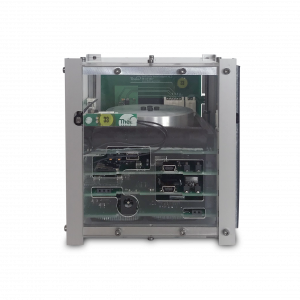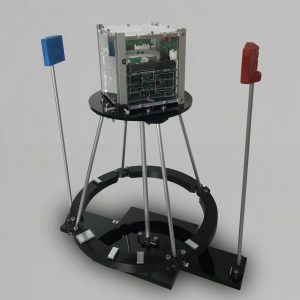We are a group of 19 people belonging to the HTSE for Aeronautics and Space (HTSEAS), with researchers, technical staff and trainee researchers. The greater part of the group's members carry out their research work at the Spanish User Support and Operations Centre (E-USOC). This is a centre which is a part of the Universidad Politécnica de Madrid specialising in research and development work in the field of aerospace science and technology and is one of seven European laboratories delegated by the European Space Agency (ESA) to prepare and carry out experiments on board the International Space Station.
Site card
Aerospace Sciences and Operations
COA
Structure: Research Groups
The results of our work respond to projects related to the following lines of research:
- Numerical Aerodynamics
- Space Operations
- Scientific Payloads in Space Vehicles
- Fluid Physics in Microgravity
- Aerospace Vehicles
- Dynamics of vibrated fluid surfaces in microgravity
- Thermocapillary effects on the dynamics of phase change materials (PCMs) in microgravity
Structure and stability of encapsulated liquid micro-drops
- Aerospace Vehicles
- Complex Systems
- Numerical Aerodynamics
- Physics of Fluids in Microgravity
- Scientific payload on Space Vehicles
- Space Operations
A significant part of our work is carried out at E-USOC, and we are in charge of preparing and carrying out experiments on board the European Space Agency's (ESA) International Space Station (ISS). Our work on one of them ¿the GeoFlow2 experiment¿ won us the team prize, awarded in the third edition of the ESA ISS Awards (2013).
We also carried out experiments with the National Aeronautics and Space Administration (NASA), such as IVIDIL, COLLOID and DCMIX2. The results of the latter meant that the industry could design more efficient oil extraction.
Our facilities at the E-USOC have a control room, which is used to carry out the experiments on the ISS, a clean room, a fluids laboratory and an electronics laboratory.
One of our researchers was recently awarded one of the Zeldovich Medals, which are given by the Russian Academy of Sciences and the COSPAR (Committee on Space Research) to scientists under 36 years of age whose research is outstanding due to its excellence and achievements in the field of space science.
We always try to bring our research and knowledge to teaching in aerospace engineering. This is why we carried out two educational experiments on the ISS: APIS and THEBAS. We have created a laboratory equipped with demonstrator satellites at the HTSE for A & S, we have built a ground station for satellite monitoring, and we are currently taking part in the international QB50 project to put a network of 50 CubeSats in orbit. Their main aim will be to acquire measurements of key parameters and constituents of the thermosphere or lower ionosphere, and research into re-entry into the atmosphere. It will be the first large constellation of CubeSats in orbit. Our satellite also carries three secondary experiments.
We have also built and instrumented a remote control aircraft, which helps students to do simulated flight practice.
Showing all 2 results
-
Design, production and validation of a nanosatellite laboratory model with a level of freedom of attitude
-
The support equipment includes a solar simulator, rotary table and magnetic simulator






